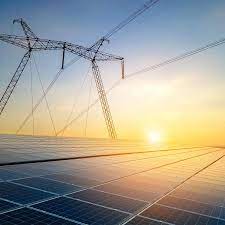
Retail stores can cut energy costs by automating the little things—lighting, aircon, even fridge defrost cycles. Smart tech isn’t just for the big end of town anymore. If you run a café, pharmacy, or fashion boutique, automation can help you actually reduce your power bill without thinking about it every day.
Let’s unpack how.
What Does “Automating Energy Savings” Really Mean?
Put simply, it means letting technology manage your energy usage so you don’t have to.
Instead of manually switching off lights or adjusting the thermostat, you install smart systems that do it for you—based on schedules, motion sensors, or weather conditions. It’s like having a digital shop assistant who only cares about cutting your bills.
And honestly? It works.
Which Parts of a Retail Store Can Be Automated?
Retail spaces are loaded with opportunity. You just have to know where to look.
Lighting
- Motion sensors in storerooms or bathrooms
- Daylight harvesting near front windows
- Smart timers that shut off signs after trading hours
Heating, Ventilation and Air Conditioning (HVAC)
- Thermostats that adjust based on weather or store occupancy
- Systems that pre-cool or pre-heat just before opening
- Zoning for back-of-house areas with lower traffic
Refrigeration (for grocers, delis, bottle shops)
- Night blinds and auto-defrost scheduling
- Alerts when door seals fail or fridges overwork
- Real-time temperature monitoring to prevent spoilage
General power use
- Smart plugs for display lighting or non-critical devices
- Standby killers that shut off unused equipment overnight
- Automated reports to track usage spikes or faults
It’s not just about slashing waste—it’s about building awareness. And once you see the patterns, the savings almost take care of themselves.
How Much Can Retailers Save with Automation?
It depends on your setup, but let’s get specific.
According to Energy.gov.au, smart lighting alone can cut usage by 20–80%. Add in smart HVAC and appliance automation, and some stores report a 15–30% drop in overall energy spend.
Here’s a real-world example:
Nick owns a local pet store in Ballarat. He installed motion-triggered LEDs in the backroom, set his aircon to follow a weather-based schedule, and put his display fridges on timers. Within six months, his quarterly energy bill dropped from $1,600 to $1,140. Not bad for a few tech tweaks.
These aren’t one-off discounts. They’re ongoing savings—month after month.
What Tools or Devices Can Help Automate Energy Use?
Most automation can be done with off-the-shelf tech. Here’s a quick list:
- Smart thermostats – e.g., Sensibo, Ecobee, or Daikin’s Wi-Fi module
- Smart plugs – TP-Link or Powerpal with app control
- Motion sensors – Philips Hue or generic PIR sensors
- Smart lighting systems – LIFX, Nanoleaf, or commercial-grade solutions
- Energy monitors – Emberpulse or Wattwatchers for real-time tracking
- Building management systems (BMS) – For larger retail or shopping centres
Even just two or three of these tools can make a huge difference.
Is It Expensive to Set Up Energy Automation?
It can be—but it doesn’t have to be.
Here’s the thing: you don’t need a six-figure building management system. Most retailers start small:
- $30 motion sensor
- $60 smart plug with app
- $150 thermostat upgrade
You can automate in stages—one device at a time. Many states and councils also offer small business energy grants or rebates to support upgrades. And don’t forget: what you spend upfront often comes back within 6–12 months through lower bills.
What Are the Pitfalls to Avoid?
Automation sounds dreamy, but it’s not foolproof.
Watch out for:
- Overcomplication – More tech = more points of failure. Keep it simple.
- Poor placement – A motion sensor behind a shelf won’t detect movement.
- No maintenance – Sensors get dusty. Batteries die. Systems need check-ups.
- Staff override – Make sure staff are trained (and on board).
Automation is a set-and-forget system—but that doesn’t mean you never check in. Build a quick monthly habit of reviewing your energy app or dashboard. Five minutes could save you fifty bucks.
FAQ: Retail Energy Automation
Q: Can automation work for older buildings?
A: Yes. You don’t need to rewire the store—most smart devices plug into existing fittings.
Q: What if I rent the space?
A: Portable smart plugs, thermostats, and lights can move with you. Permanent wiring isn’t necessary.
Q: Do I need to be “techy” to manage these systems?
A: Not at all. Most use simple mobile apps or voice assistants like Alexa or Google.
Final Thought
Retail is fast, unpredictable, and often relentless. Energy bills? They just keep coming. That’s why automation isn’t a luxury anymore—it’s a survival tool.
The best part? You don’t have to do it all at once. Just one smart plug, one sensor, or one thermostat can start a snowball of savings.
And if your goal is to reduce retail store energy bills, automation might just be the easiest fix you haven’t tried yet.
